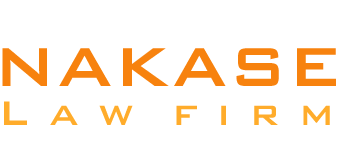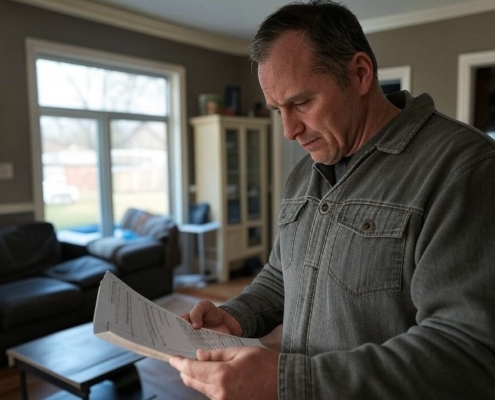Schools Owe A Special Duty Of Care To Students
Parents have routinely placed their trust on schools in ensuring that their children are kept safe and are guaranteed safety and welfare while within the school grounds. Children in the ages of six to eighteen are required by the state law to attend school, unless in some few exceptional cases. (Ed. Code, §§ 48293, 48400; Well’. Inst. (Code, § 601.) This legal duty provides school officials with a parental-type of authority and responsibility. (In Hoff v. Furley Unified School Dist.1998,19 Cal.4th 925,of 932.)
Consequently, schools are provided with a more serious duty towards student safety beyond the duty of care mentioned in Civil Code section 1714. Under the law, schools and their employees are required to take reasonable measures to ensure that learners are shielded from foreseeable hazards.
California personal injury attorney knows special relationship means that there is an increased duty of schools in ensuring safety. It is guaranteed by the California’s Constitution that all public school students and staff has realize the right to safe and peaceful campuses. (Cal. Const., an. I, § 28, sub. (I.)) This is a plentiful chapter in the office to command novitiate and the certify of cover prevalent in the regulations of California facts that tutor establishments dominate students at any known joint and direct safeguards mete out. (Dailey v. Los Angeles Unified Sch. This duty is applicable to extracurricular activities as well, whether they are mandatory or optional. (Dist. 1970 p.2 Cal.3d 741, 747. (William S. Hart, supra, 53 Cal.4th at 869-870; J.H. v. Los Angeles Unified School Dist (2010) 183 Cal. App.4th 123, 142-143.
California Physical Activity and Education
The California Supreme Court appreciates the highly impressive role of sport in the youth’s upbringing, learning stamina, developmental endurance, as well as fear of success. (Knight v. Jewett (1992) 3 Cal.4th 296; Khan v. East Side Union High School Dist. (2003) 31 Cal.4th 900, 1003) State has recognized an affirmative defense of primary assumption of risk in sports-related liability cases to promote active sports participation. (Knight v. Jewett, supra, 3 Cal.4th 296.
The imposition of liability makes people more careful, which can be a positive factor in many areas, such as the operation of heavy machinery or driving. But this kind of restraint, as can be seen from the sample of sports, restrains the development of athletes and the love of the sport itself. It is important to note that sports with natural risks should not require duties that will alter the nature of the sport or will deter participation. (Khan v. East Side Union High School Dist., supra, 31 Cal, 4th at 1003.)
The California Supreme Court ruled that the defense of primary assumption of risk, as recognized in a sporting context, is designed to prevent the inherent change in a sport.
Knight v Jewel and Duty to Coach
As long as three decades prior to Knight v. Jewett, 1992 3 Cal.4th 296, the doctrine of primary assumption of risks was established by the California Supreme Court in regard to sports case with flag football. The Court held that players are not responsible for ordinary physical contact characteristic of the sport but only for serious criminal conduct or intentional injury. (Id. at 318.)
But the Court advanced a subtler test for negligence by hinting that it does not follow that there was no negligence if one participates in a sport, which involves others in conduct, who unnecessarily enhance the sport’s assumed risks. (Id. at 311.)
The scope of duty in sports remained ambiguous: Is it the issue of purposefully or purposely acting wrongly or unacceptably increasing the risks that are involved? This was revisited by the Supreme Court in Kahn v. East Side Union U.S 2003 31 Cal.4th 990 dealing alternatively with liability of coaches. Young swimmers can be injured if some coach was allegedly of negligent coaching dualptive. The Supreme Court overturned the decision made by the trial and appellate courts and concluded that the behavior of the coach could be evaluated as reckless.
The Court highlighted that, despite the complains of the athlete, the coach did not give instructions about the safe way to jump that resulted in the grave injury. (Id. at 1012-1013.)
Comprehending Characteristics of Sports and Defendant Roles
Every sport carries its’ own risks throughout, based on the rules, notable behaviors and practices, standard routines, surroundings or physical workload. However, the dangers of baseball are dissimilar from those water skiing or water polo. (Cf.Avi la v. Citrus Community College Dist.(2006) 38 Cal.4th 148; Souza v.Squaw Valley Ski Corp.(2006) 138 Cal.App.4th 262.)
The responsibilities of the defendants in sports are also dependent on their obligations. For instance when an act of playing baseball leads to slipped baseball bat =, the players is not liable while the owner of the stadium has to provide a conducive environment for the on-lookers. However, corruption is subtext and whether matters, which is essential but does not mean that segregation is not an issue, even considering the fact.
Coach Role and Responsibilities
Although there are inherent learning risks, coaches and sports instructors a duty not to unduly enhance these factors. (Kahn v. East Side Union H.S., supra, 31 Cal.4th at 1005-1006.) These are the same Justices that show that coaches are held more accountable because of their roles in ensuring that safety is maintained especially in the school setting. (Id. at 1019.)
CACI No. 471 establish the plaintiff’s burden to prove the coach committed an act that constituted either specific intent to harm, an act that created an unjustified risk of harm, or an act that caused an unjustified escalation of risk. The right standard to be used varies from one specific case to another. (Kahn v. East Side Union H. S., supra, 31 Cal.4th 1012-1013.
This becomes even clearer in the case of Eriksson v. Nunnink 2011 COA Cal.App.4th 826, in which the Court pointed out that coaches may be held liable for an increased injury risk if they let an unfit participant take part in an activity or use unsafe apparatus Eriksson v. Nunnink (supra) 191 Cal.
Waivers of Liability and Assumption of Risk features
Generally, express waivers of liability have no effect on future gross negligence in sports. Although negligence waivers have the capability to limit liability, they do not work for cases where there is clear evidence of gross negligence. (Los Angeles Journal Operation, City of Santa Barbara v. Superior Court 41 Cal.4th at p.751.)
Secondary Assumption of Risk
When there is knowledge on the part of the participant to be put at risk, arising out of a breach of a duty of the person at risk to achieve safety. This principle does not preclude legal action but can limit the plaintiffs’ recovery based on their alleged risk. (Knight v. Jewett, supra, 3 Cal.4th at 310.
Combining Legal Standards in Sports Liability.
The mere fact that the plaintiff got hurt by the risks that are inherent in the sport is not enough to apply the primary assumption-of-risk doctrine. Rather, it should be shown that the defendant did not have any duty towards the plaintiff. However, coaches should be careful not to rise the risks that are normal in the learning process and silliness or outrage in this regard can create liability as well. (Kahn v. East Side Union H.S., supra, 31 Cal.4th at 1019, emphasis added.
To summarize, comprehension of the boundaries of the primary assumption-of-risk defense is useful while presenting cases of hidden negligence as part of a sport activity. As such, since there is no immunity from negligence in the California law when it comes to sports, it is possible for responsible parties to be held by their actions.






























